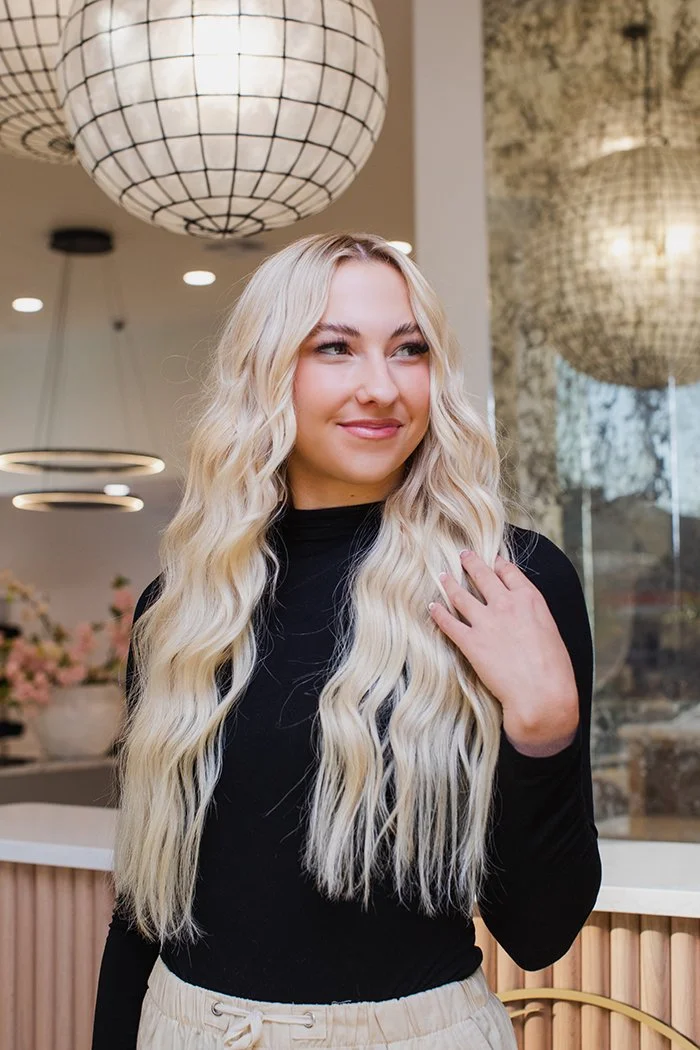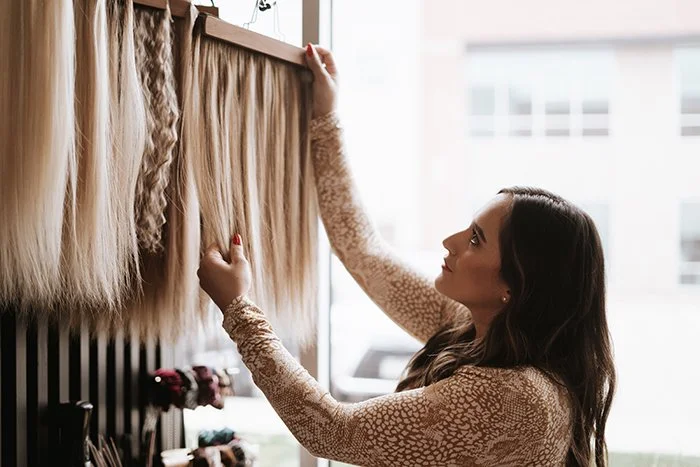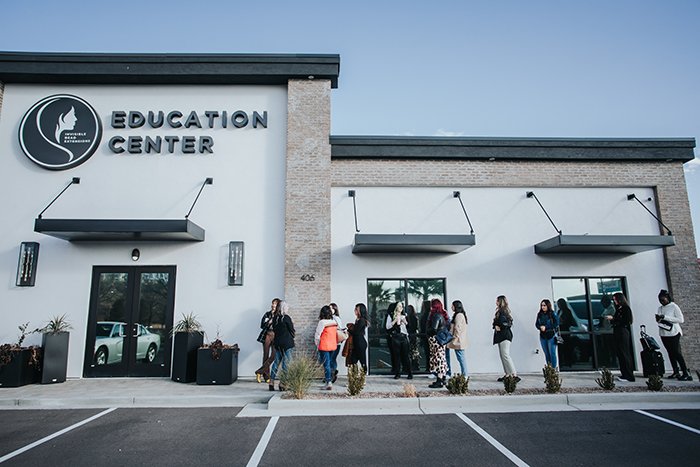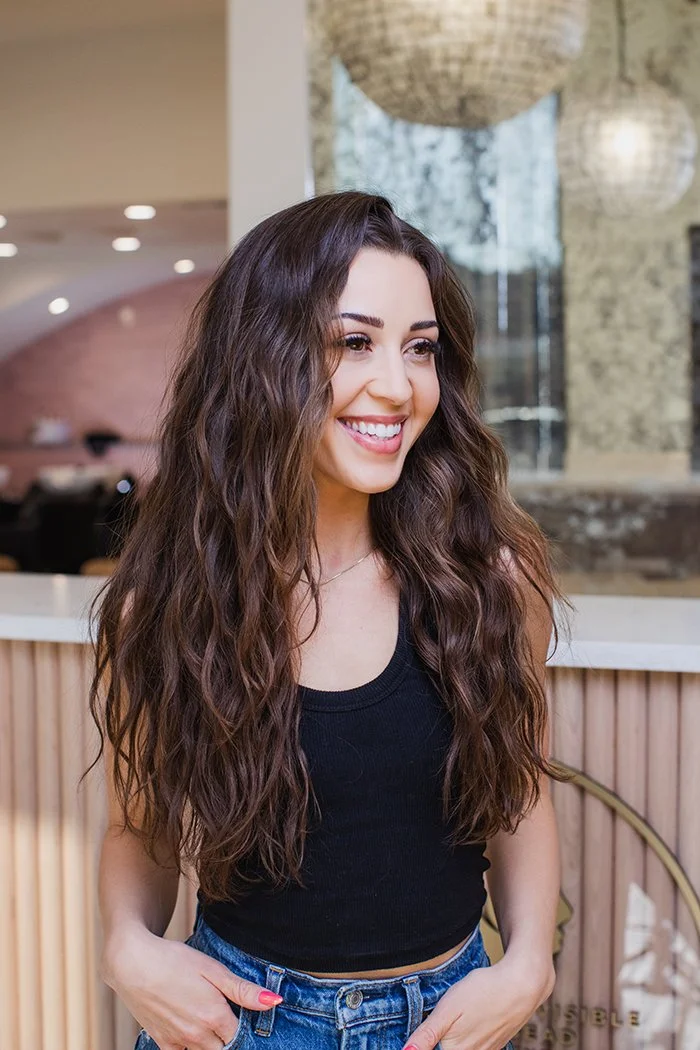How to Choose the Best Hair Extension Method and Maintenance Tips
Hair extensions are a great way to add instant length and volume to hair.
[Written by McKenzie Turley]
If you struggle consistently with limp or lifeless hair and your ponytails look more like paintbrushes, you may be ready to look at hair extensions as an option. You will most likely be quickly overwhelmed once you start researching all the different types of extension methods. There are three major factors that should be considered when selecting an extension method:
Do they maintain the integrity of your hair and scalp?
Are they durable and conducive to your lifestyle?
What does the home maintenance consist of?
In this article we will discuss these important factors to look for when deciding upon which method to choose, as well as a few strategies to properly care for your new extensions.
There are three major factors that should be considered when selecting a hair extension method.
When you are getting extensions, the last thing you want is a method that will damage your hair or scalp. That is why it is imperative you find a stylist who has received extensive training in the method they offer. Although any licensed cosmetologist can offer extensions, there is a wide range of continued education they can participate in. You should look for a valid certification and then follow up by asking what the stylist had to do to receive their certification. Some extension methods will only require attendance to a one-day class where minimal training is given.
Other methods, like Invisible Bead Extensions® (also known as IBE®), will require accountability through a highly trained mentor where the stylist works up to several months to adequately perform the method. This method also provides its certified stylists with continued education opportunities to continue intensive study of the hair and scalp.
It's important to make sure your extension artist is highly trained in the method they offer and can provide the proof you ask for when looking for their education. The goal of the extension artist you choose should be to leave your hair and scalp better than when you came.
Invisible Bead Extensions (IBE®) is a game-changing method for hand-tied weft installation that has taken the industry by storm.
You should be sure to select a method which provides durability. The last thing you want is to be sweating during a hot yoga class and start shedding your extensions because they were attached with an adhesive that can become slippery when damp! Tape-in extensions are attached by sandwiching a thin slice of natural hair in between two adhesive pieces. Although this offers a quick solution, the longevity often proves to not be quite enough especially for those who are active.
A method that uses beads to attach the hair to your natural hair can prove to be a bit more durable since you are not dealing with a substance that breaks down over time or can make the hair feel sticky. Individual beaded extensions are often referred to as I-tips and can be a way to transform your locks.
However, this type of extension can easily have over 100 attachment points when adding significant length, which can be difficult to maintain and keep from matting. It is extremely important to separate each single attachment, making sure to properly brush often. This type of hair extension can be uncomfortable for many to lay on at night and also difficult to hide when wearing upstyles.
The most popular method for hair extensions is the weft method.
The most popular method is the weft method and it has continually been gaining traction among the hair extension industry over the years. This is a type of method which involves creating a horseshoe shape foundation using the guest’s natural hair and then sewing a weft onto that foundation.
This type of method began with the African American community that began braiding the natural hair into a foundation then sewing the extension hair on to it. It has continued to evolve and the weft method now includes many different types of foundations as well as types of hair wefts used.
The type of weft method you use is extremely important, as not all foundations are created the same. Small and subtle differences in partings, section sizes, and materials used can make the biggest difference. It's important to find a method that keeps the hair in a natural fall position, meaning the hair is not pulled or forced out of its natural resting state. This type of foundation can cause traction alopecia and extensive hair loss.
Ask your extension stylist questions about how their method of choice is installed and also ask to see photos during your consultation. Look to find a foundation that provides flexibility and comfort from day one, and allows the hair and scalp to remain unstressed. IBE® is known as the leading method in the industry to focus on these benefits.
The IBE® education center is a state-of-the-art facility designed specifically for stylists to come, learn, and grow.
The type of hair used in a weft method can vary greatly. A machine weft was the first type of weft created and is the thickest and heaviest of all the wefts. It may be suitable for some foundations, but not all. Because of its weight, it will not be the safest option for someone with thin hair. It can feel bulky and cause pulling as it grows due to the weight.
A better option for many that struggle with thin hair is a hand tied weft or micro weft. They are much more flexible and light, and can be layered to customize color and fullness. Some extension methods can use all types of wefts, and other methods like IBE® recommend only using a hand tied or micro weft due to how the foundation is created and the importance of natural-looking rows.
McKenzie Turley is a pioneer in the hair extension industry and the founder of Invisible Bead Extensions.
Once you select your extensions artist and method, make sure you are adequately trained on how to care for your new investment. Each extension method will require a different set of rules to follow for maintenance so make sure you have your stylist teach you how to maintain them. Regardless of the method, you will be required to brush throughout the day and apply professional products to keep your extension hair soft and hydrated. You will want to loosely braid your hair each night and invest in a silk or satin pillowcase to reduce friction of your extensions on your pillow while you sleep.
Education is key when it comes to having a good experience with your new extensions. You need to make sure your stylist is well-educated on their method of choice, and you need to be taught how to properly care for them as well. Hair extensions can be a powerful tool in transforming your look and adding to your self esteem. Anyone who says, “It’s just hair,” has never felt that palpable shift that one feels while walking out of the salon with their new extensions and their newfound confidence.
For more information about Invisible Bead Extensions, visit their website and follow on Instagram: @invisiblebeadextensions
McKenzie Turley is a pioneer in the hair extension industry and the founder of Invisible Bead Extensions (IBE®), a game-changing method for hand-tied weft installation that has taken the industry by storm. Since its conception, thousands of stylists have been certified in IBE® and have forever changed the lives of women and their confidence. The IBE® education center is a state-of-the-art facility designed specifically for stylists to come, learn, and grow. In addition, IBE® offers a masters program, which is the closest thing you can get to having a phD in extensions. Filled with over 20 courses, accountability and education, stylists can easily double their income behind the chair by becoming extension specialists because of the skills taught in this program.






